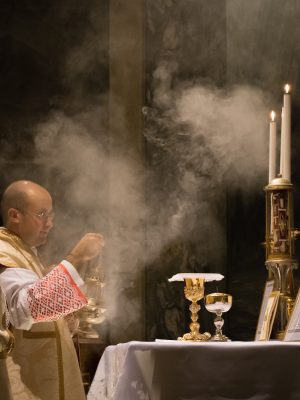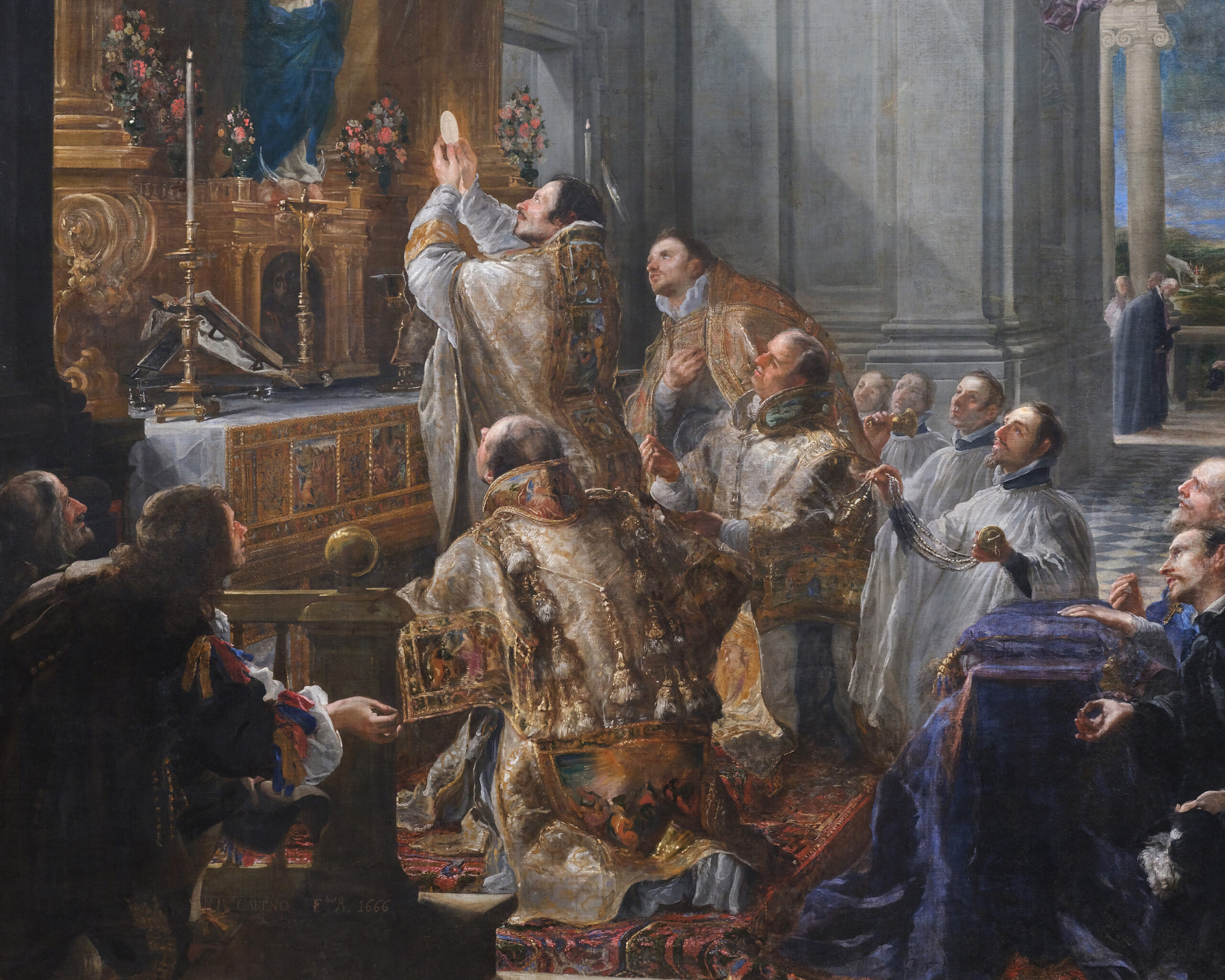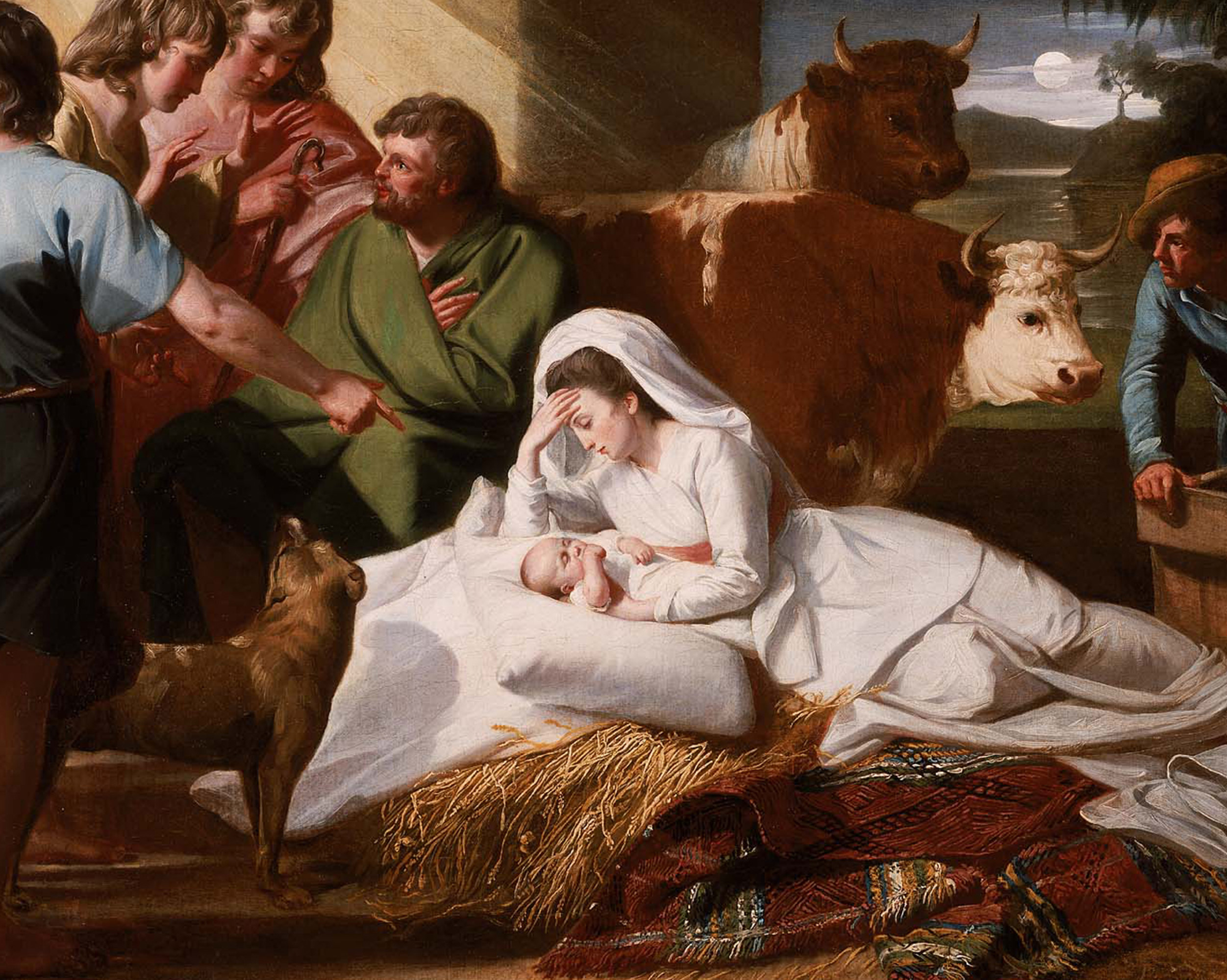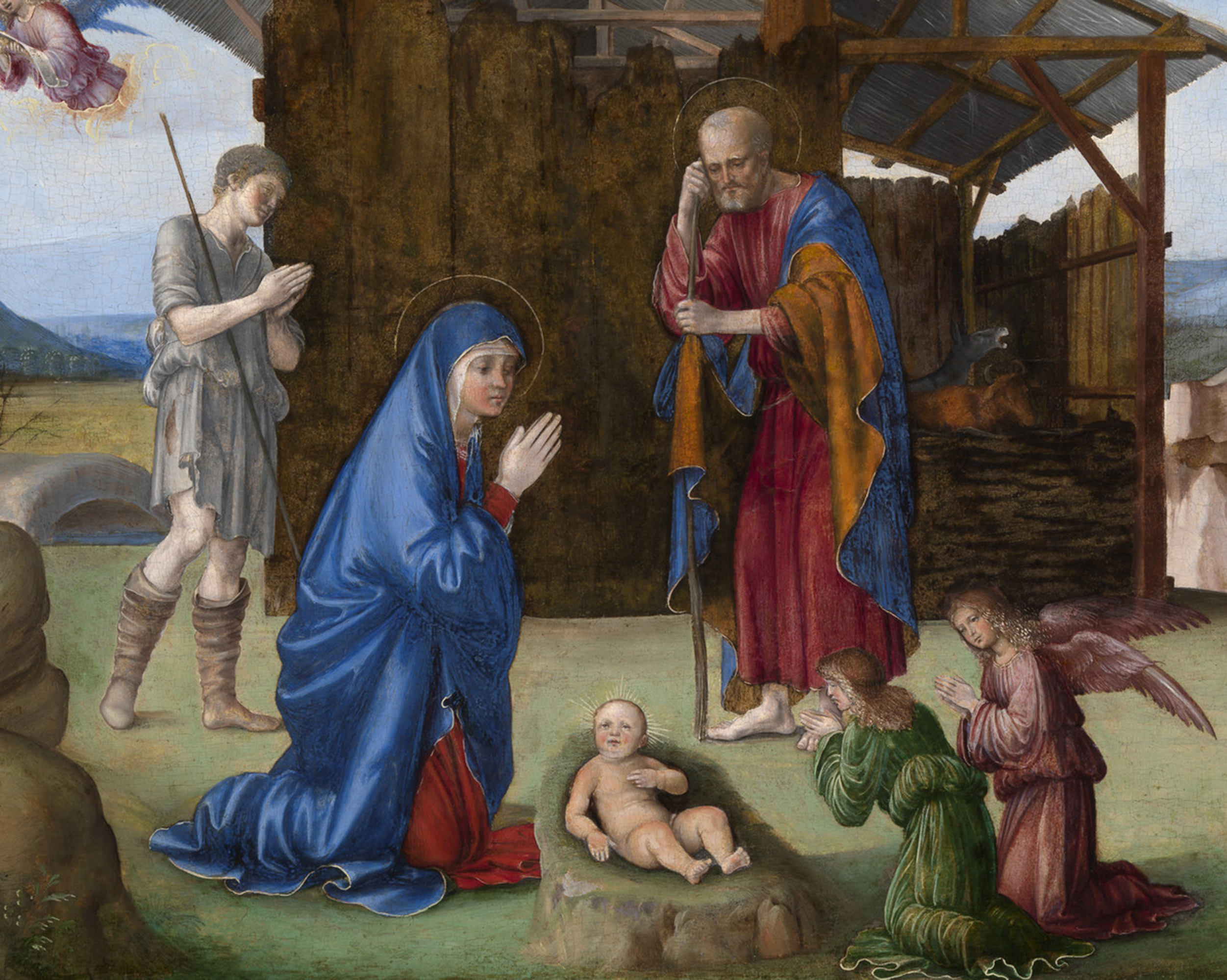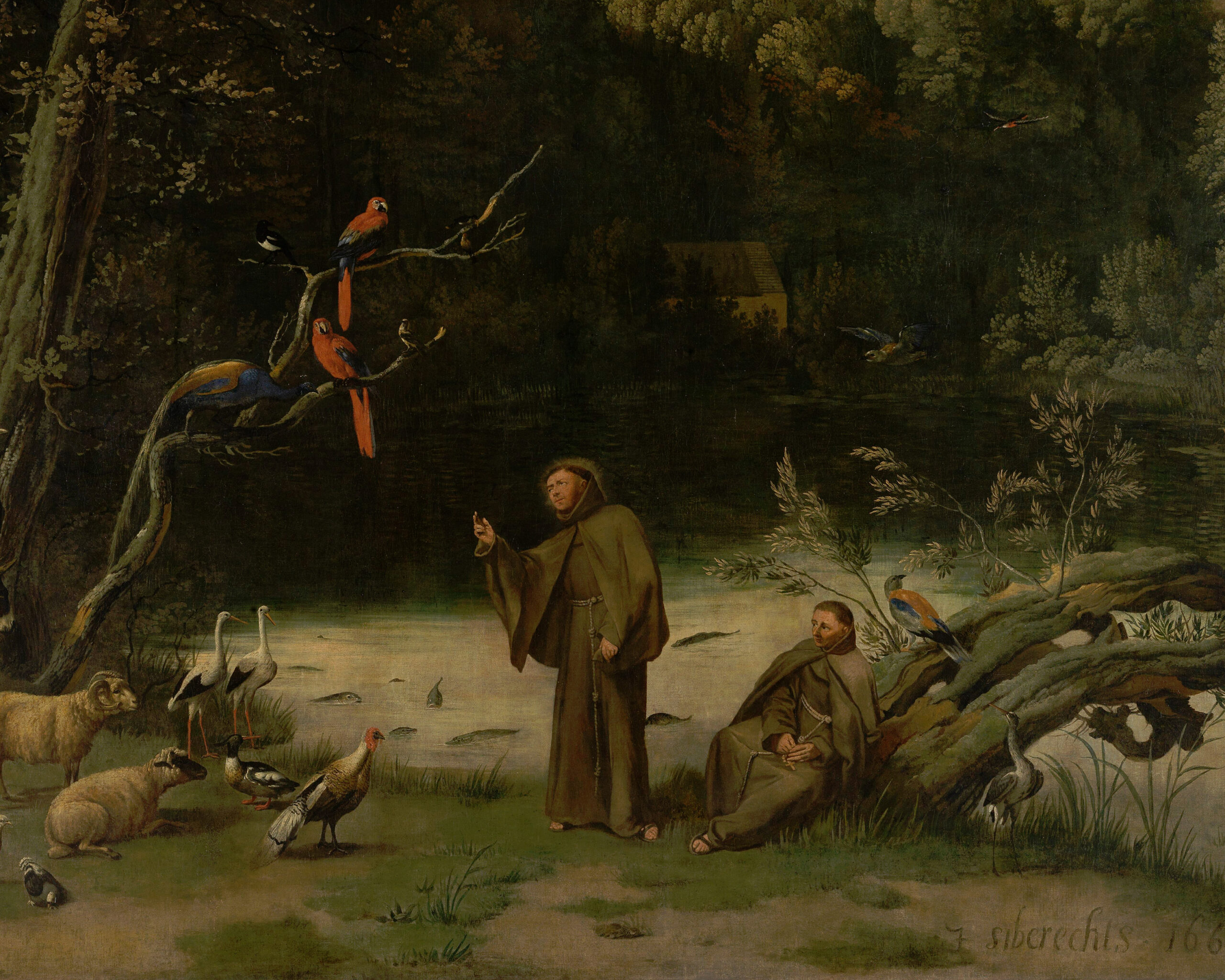“The custom of saying three Masses on this day is also very ancient, and recalls to our minds the threefold birth of the Second Person of the Blessed Trinity – His eternal birth from the Father before all ages, His temporal birth in Bethlehem, and His spiritual birth in the souls of men.”
–The Catholic Missal by Very Rev. Charles J. Callan, O.P.
Catholics in every part of the world gather on Christmas Day to worship – this is a holy day of obligation and the faithful are commanded to be present at Mass.
According to the 1983 Code of Canon Law there are ten holy days of obligation while only six are observed in the United States. Nevertheless, Christmas is high on the list for both.
The reason for the holy day of obligation is on account of the sublime nature of the feast and the Church’s desire to enrich both clergy and laity with an abundance of spiritual graces and blessings that are made manifest with the universal celebration of the feast.
An Immemorial Tradition
Every Latin Rite priest enjoys on Christmas Day the special favor and privilege of being permitted to celebrate not one, but three Masses in a day. Ordinarily, a priest only celebrates one Mass per day.
When there is real necessity, priests may celebrate twice in a day, so that the faithful under their care can conveniently assist at Mass on Sundays and holy days. To celebrate three times on a Sunday a priest must have special permission from his bishop.
The only other time this is seen in the Latin Church is on All Souls’ Day, November 2nd when priests have the privilege of celebrating three Masses on the same day in suffrage for the faithful departed, each Mass having slightly different prayers and readings.
Similarly, on Christmas Day, whether there is need or not, every Latin Rite priest is permitted, though not obliged, to offer the Holy Sacrifice of the Mass three times.
This is an ancient custom of considerable antiquity, that is more commonly seen with priests who celebrate the Extraordinary Form of the Roman Rite. It is also preserved in some monastic communities, cathedrals, and many parish churches.
These Masses have been historically celebrated at intervals, that is, at midnight (Ad Primam Missam in Nocte), dawn (Ad Secundum Missam in Aurora), and during the daytime before noon (Ad Tertiam Missam in Die Nativitatis Domini). They are celebrated in the order in which they are arranged in the ancient Roman Missal: the Mass at Midnight, the Mass at Dawn, the Mass of the Day.
The times at which these Masses are said do not necessarily correspond with their titles. For example, sometimes immediately following Midnight Mass a priest may choose to celebrate a private Low Mass for the second Christmas Day Mass at Dawn.
The Mass at Midnight specially recalls the temporal birth of Christ under the midnight stars of Bethlehem, recalling the first Christmas. Catholics who attend this Mass fulfil their holy day of obligation requirement with their attendance.
Unfortunately, the Novus Ordo Mass (the 1970 Roman Missal) does not maintain this venerable tradition of three Masses on Christmas Day.
Historical Origins of the Venerable Tradition
The custom of a priest celebrating three Mass on Christmas began in Rome, originally something that only the Pope did. As the custom grew over the decades it was later extended to bishops and finally to all priests throughout the Latin Church.
Indeed, the tradition developed in fourth century Rome, with the Popes accustomed to celebrating the Masses at separate times and locations, while traveling by procession from one location to the next, an event that took all night with the people depriving themselves of their usual rest.
These very interesting historical details were recorded by Amalarius (775-850), a bishop and accomplished liturgist as well as the ancient liturgist of the thirteenth century known as Alcuin. These historic details are also clearly evidenced by the texts of the old Antiphonaries of the Roman Church.
The first Mass was at midnight at the Liberian Basilica of St. Mary Major (in Italian, Santa Maria Maggiore). The reason for this was because this location was the largest church in Rome dedicated to Our Lady.
Further, tradition attests the authenticity of the wooden relics of the crib of Bethlehem, kept since that time enshrined in the confessio crypt under the high altar of the basilica. This Mass was always celebrated as an extension of the Christmas Eve vigil.
The second Mass was at the Roman Basilica of St. Anastasia (in Italian, Sant’Anastasia al Palatino) a late third century, early fourth century basilica located at the base of the Palatine Hill, nestled in the city of Rome’s old Greek quarter near the Circus Maximus.
Above the church on the top of the hill is where the emperors of ancient Rome had their residences, overlooking the present-day basilica. Nearby in the other direction are the ruins of the Roman Forum, indicating the prominence of the location, close to where the city was founded, an episode that took place on the Capitoline Hill.
The reason for this location is the date of the martyrdom of St. Anastasia, commemorated on December 25 in the Roman Martyrology where the memory of her martyrdom is kept.
December 25th marks the day she was burnt alive in the year 304 AD under the reign of Dioceltian (244-311). The martyrdom of St. Anastasia was during the last and most ferocious of the persecutions of the Early Church in Rome, a terrible period that occurred just before the legalization of Christianity in the Roman Empire.
The name St. Anastasia stands out in a special way, as it comes from the Greek work anastasis, meaning “resurrection.” So revered was she that her name was inserted into the Roman Canon in the fifth century in the prayer “Nobis quoque peccatoribus.”
Her feast in unique in the Roman liturgy, having a special commemoration in the second Mass on Christmas Day in memory of the day she gave up her soul for Christ.
The third and last Mass celebrated by the Pope was in the Vatican (in Italian, San Pietro in Vaticano), as the principal Mass of the day. This Mass was historically said in St. Peter’s Basilica over the tomb of the Blessed Apostle Peter.
While this custom began in Rome, it spread to France, for bishops only, dating to the time of Charlemagne. It was later permitted to priests and gradually spread throughout the world.
The Mystical Meaning
Historically the three Masses have been given a mystical meaning by Church theologians, stating that they symbolize the three births of Christ.
Namely, His birth from the Father before all ages. Secondly, His birth from the Virgin Mary at Bethlehem. Thirdly, His spiritual birth in the hearts of the faithful by sanctifying grace.
The original reason for the three Masses was something much more simple and practical, as stated above.
The Pope wished first to observe the vigil to honor Our Lady, in the second to commemorate the virgin martyr Anastasia at daybreak, and in the third to celebrate with the greatest possible solemnity in the Vatican, the center of Christendom, the Incarnation of Christ.
Dom Prosper Gueranger, a famous nineteenth century liturgical theologian had this to say of the three Masses on Christmas:
“But such is the greatest of today’s Mystery, that the Church is not satisfied with only once offering up the Holy Sacrifice…Besides, this Jesus, who is born tonight, is born thrice. He is born of the Blessed Virgin, in the stable of Bethlehem; He is born by grace, in the hearts of the Shepherds, who are the first fruits of the Christian Church; and He is born eternally from the bosom of the Father, in the brightness of the Saints: to this triple birth, therefore, let there be the homage of a triple sacrifice” (cf. The Liturgical Year, Christmas Day).
Finally, related in a similar manner is the tradition in Rome of “stational” churches, reflected in the Extraordinary Form Roman Missal. On Christmas Day the First Mass at Midnight is the station at St. Mary Major, with Mass at the altar of the crib. The Second Mass at Dawn is the station at St Anastasia’s. The Third Mass during the Day has its station again at St. Mary Major.
As a side note, although there are various peculiar customs of the day that were the outgrowth of pagan celebrations of the January calends, none of this has any relation to the Christmas celebration in Rome on December 25.


